
News
 Back to news
Back to newsWhether Subject or Artist – UK Publicly Owned Statues are Very Much a Man’s World…
Monday, 24 August 2020Although women have been involved in art since its inception, traditional art history has excluded or hidden their participation. Women’s contributions have been seen as absent, or of a lesser quality than that of their male counterparts.
It is only with the emergence of feminism that attitudes are changing. The stereotypical depiction of women both as art subjects and as artists may be on the decline, but there is still work to be done.
To highlight how women have been treated in art, PACK & SEND has analysed nearly 5,000 publicly-owned statues and monuments to find those of women and by women.
Subjects
Of the 4,912 sculptures we analysed, 1,470 were able to be assigned a gender. Of these, 1,119 were male. Just 351 were female. This means that under a quarter of these publicly-owned sculptures are of women.
But when we exclude nameless figures the numbers become even worse. 892 statues were of named individuals. Of these, 764 were of men and only 128 were of women. This means that named women account for around 14% of the total. There are nearly as many publicly-owned statues of men named John (82) as there are of all named women.
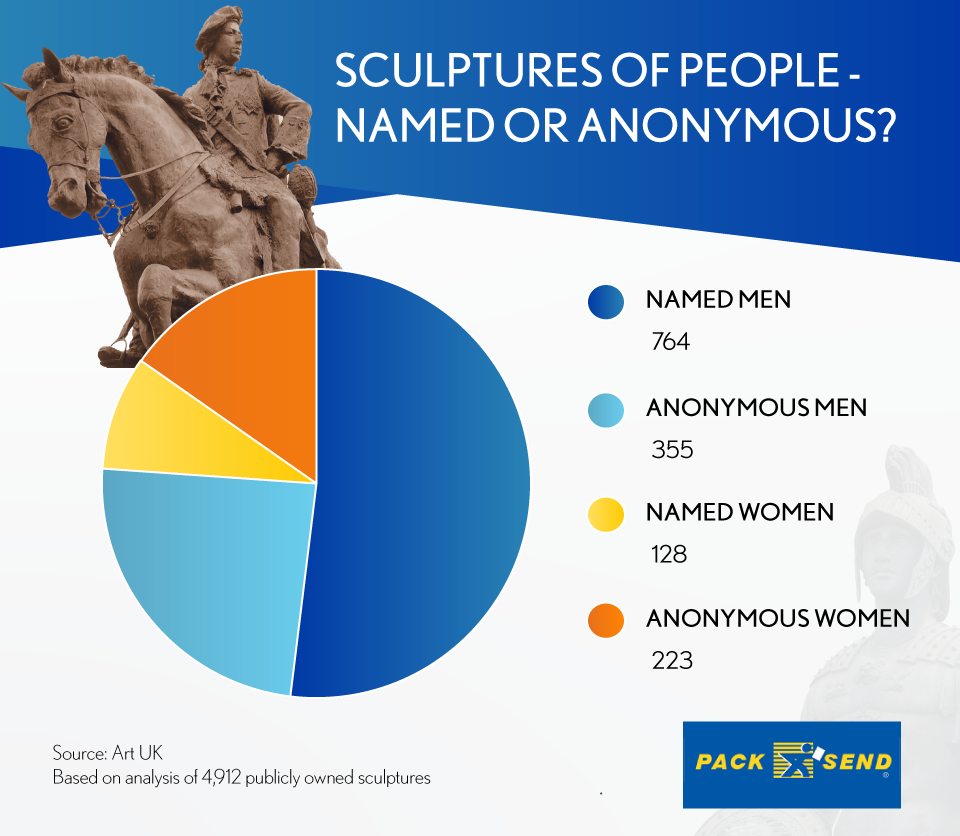
Indeed, 68% of male statues are of named individuals, whereas 64% of female statues are nameless.
Artists
The 4,912 publicly-owned sculptures in our analysis were made by 1,914 artists. Of the sculptors, the overwhelming majority are male. 1,452 male artists were found, compared to only 393 women. The most common male artist name (John) is ten times more likely than the most common female artist name (Mary).
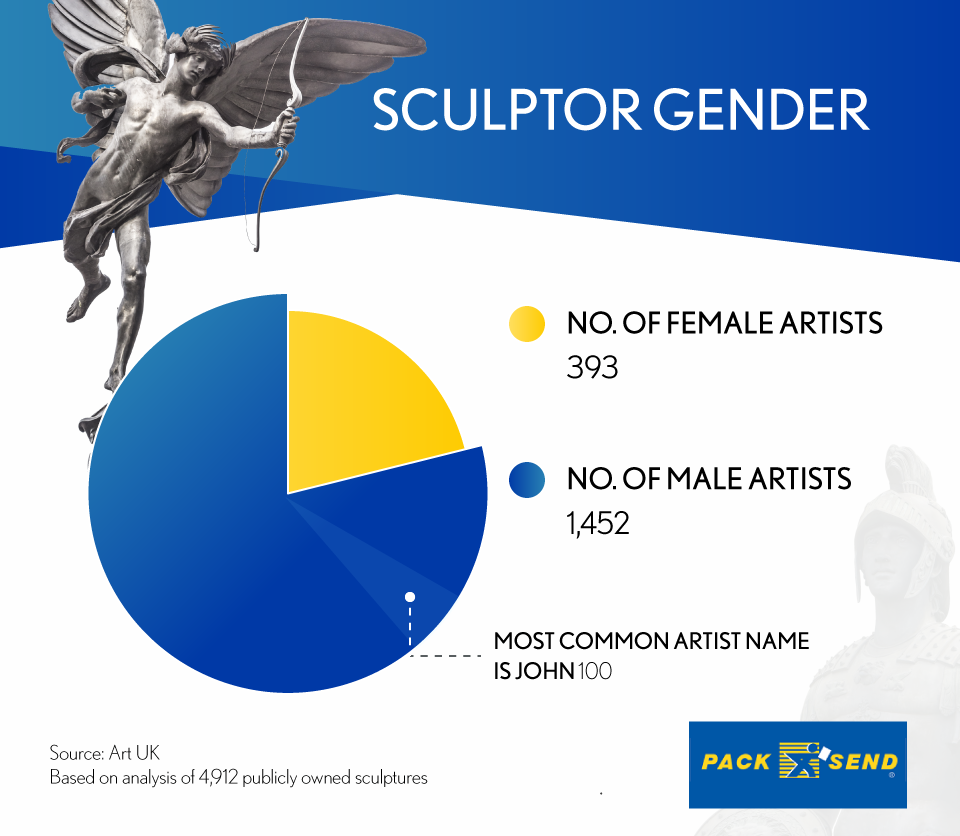
But are men and women more likely to sculpt themselves or each other? There are 768 sculptures of men, by men, but only 213 of women. Even women are more likely to feature men as their subjects. 93 statues of men were produced by women, compared to 44 of women.
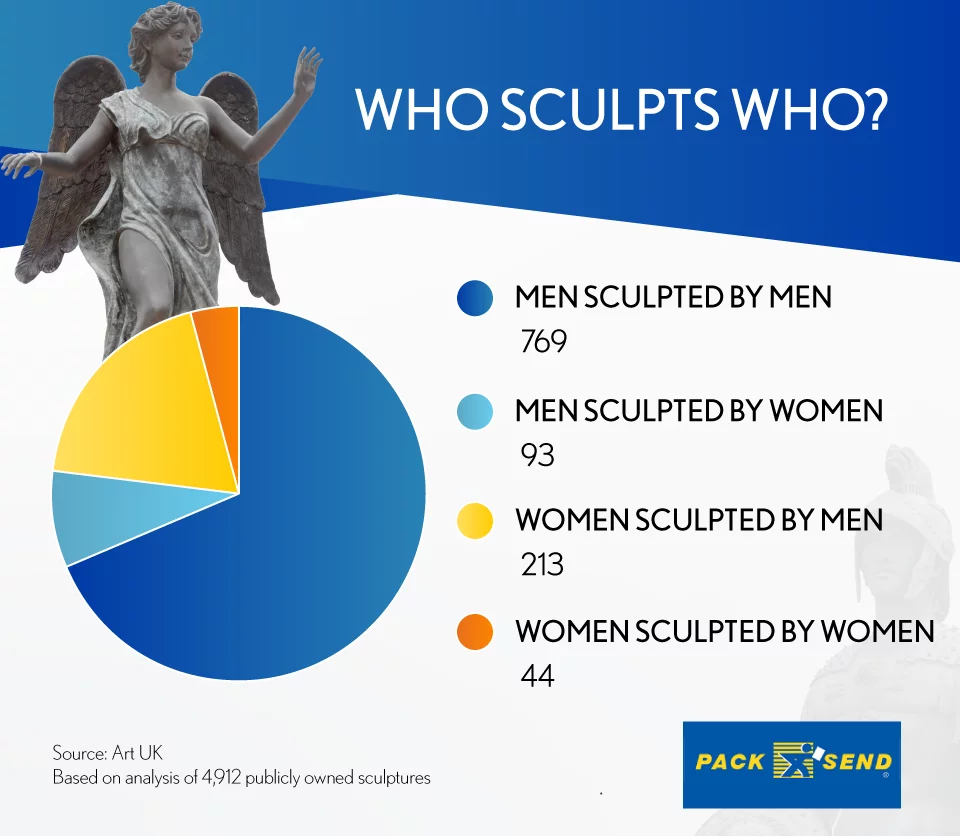
Galleries
We’ve also analysed where in the country gives the biggest platform to female sculptors. When looking at locations with more than ten publicly-owned sculptures, Dorset comes out as the location with the highest proportion of pieces by women. 69% of the sculptures in the South Western county are by women.
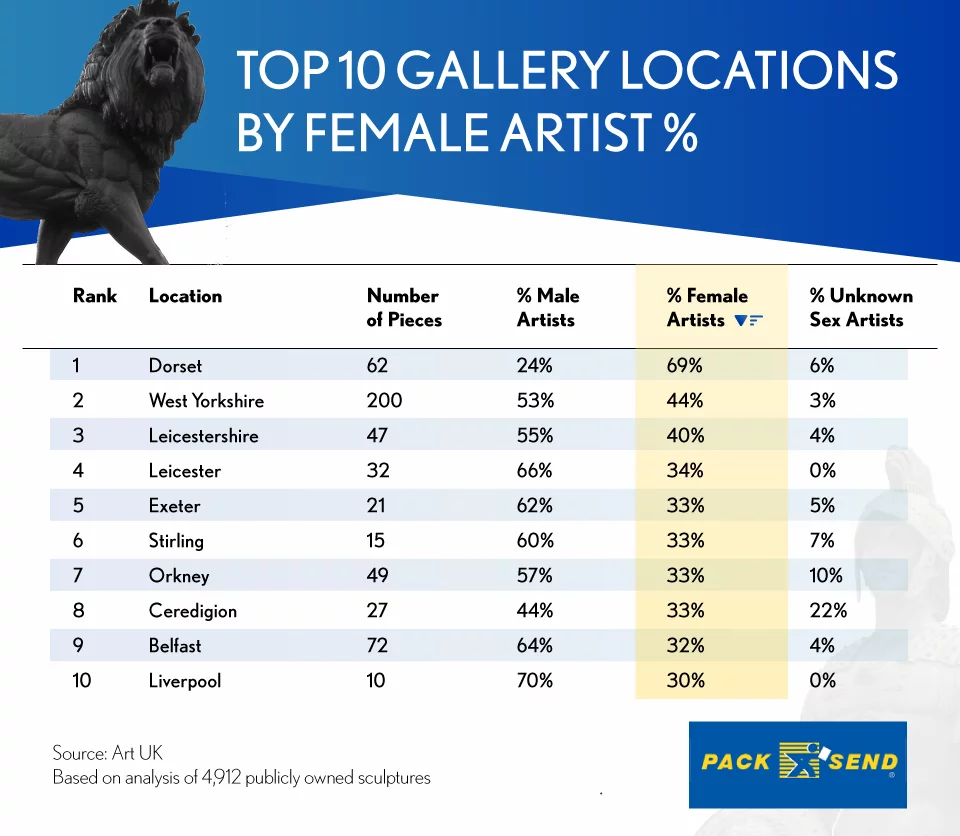
At the other end of the scale, there are three locations where all publicly-owned sculptures are by male artists. Redcar and Cleveland, Tyne and Wear and Fife all have exclusively male collections.
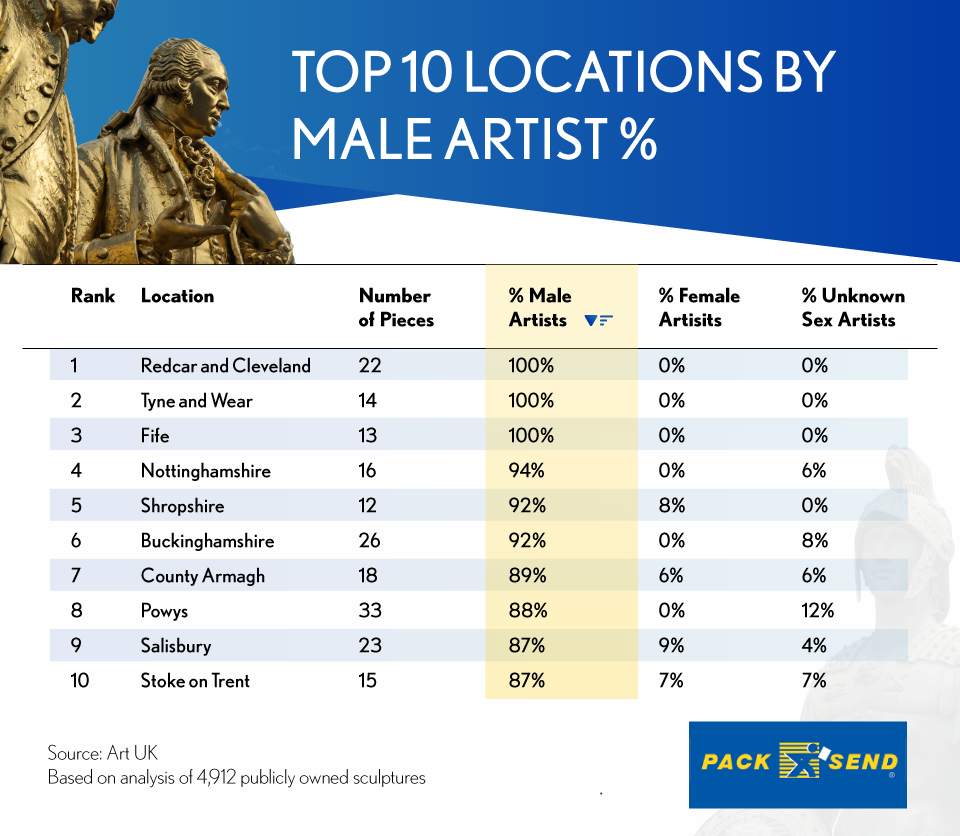
Conclusion
We’ve highlighted that art history is inherently gendered, and any analysis of the intersection of art and gender must acknowledge this fact.
Art and artworks should be seen in the context of when and why they were created, recognising the social barriers to entry women faced (and still do) when trying to engage with the art world.
There are some excellent Initiatives to promote women in art; we’ve highlighted two of them here:
Association of Women in the Arts
Methodology
4,912 publicly-owned sculptures were identified using the Art UK online database
For each sculpture, its title, artist, location and work type were extracted. From this information, 892 sculptures of named individuals were identified.
Each artist and named individual were assigned a gender. Statues of nameless male and female figures were also assigned a gender. All other statues were classified as ‘unknown’.
